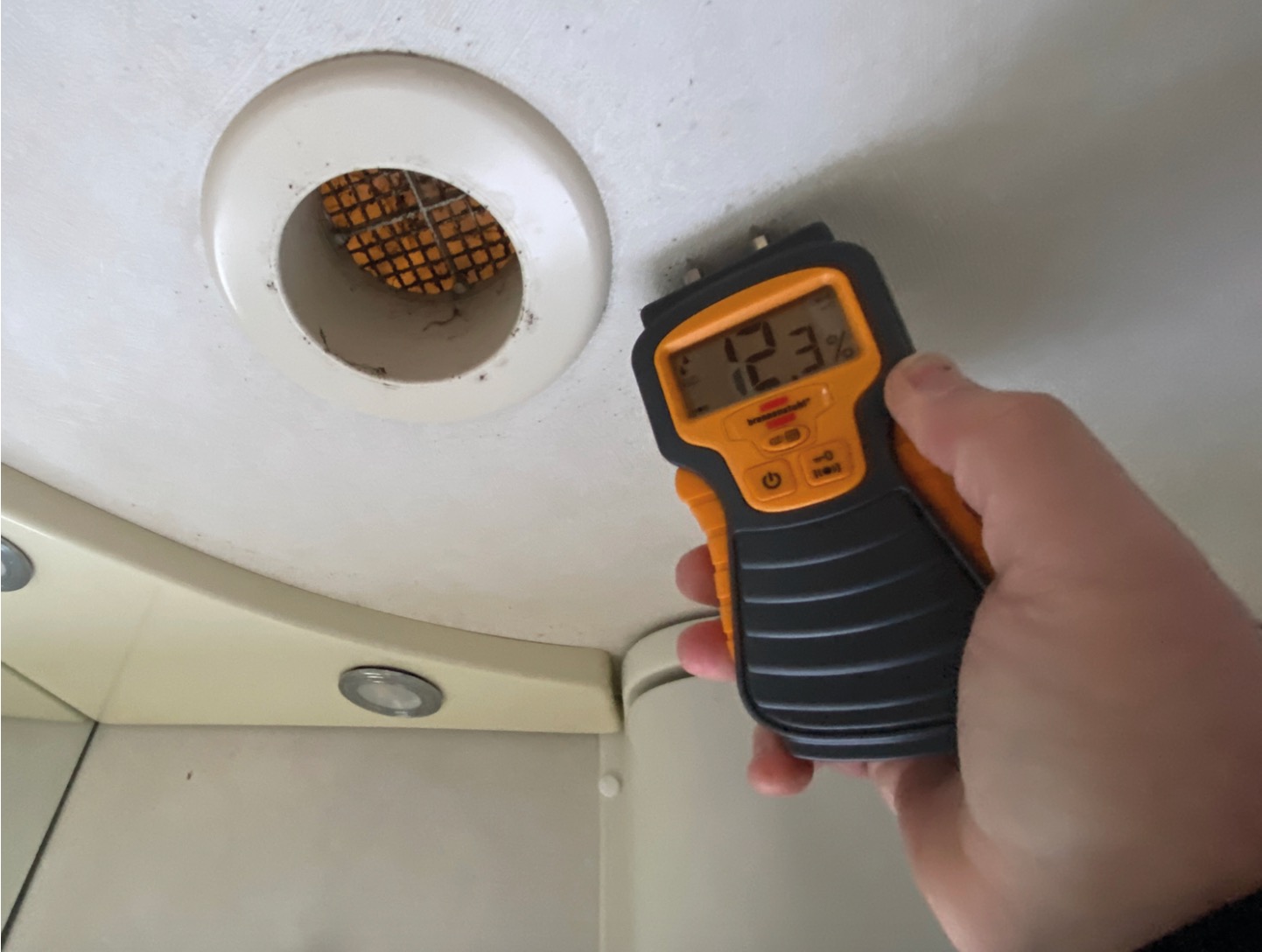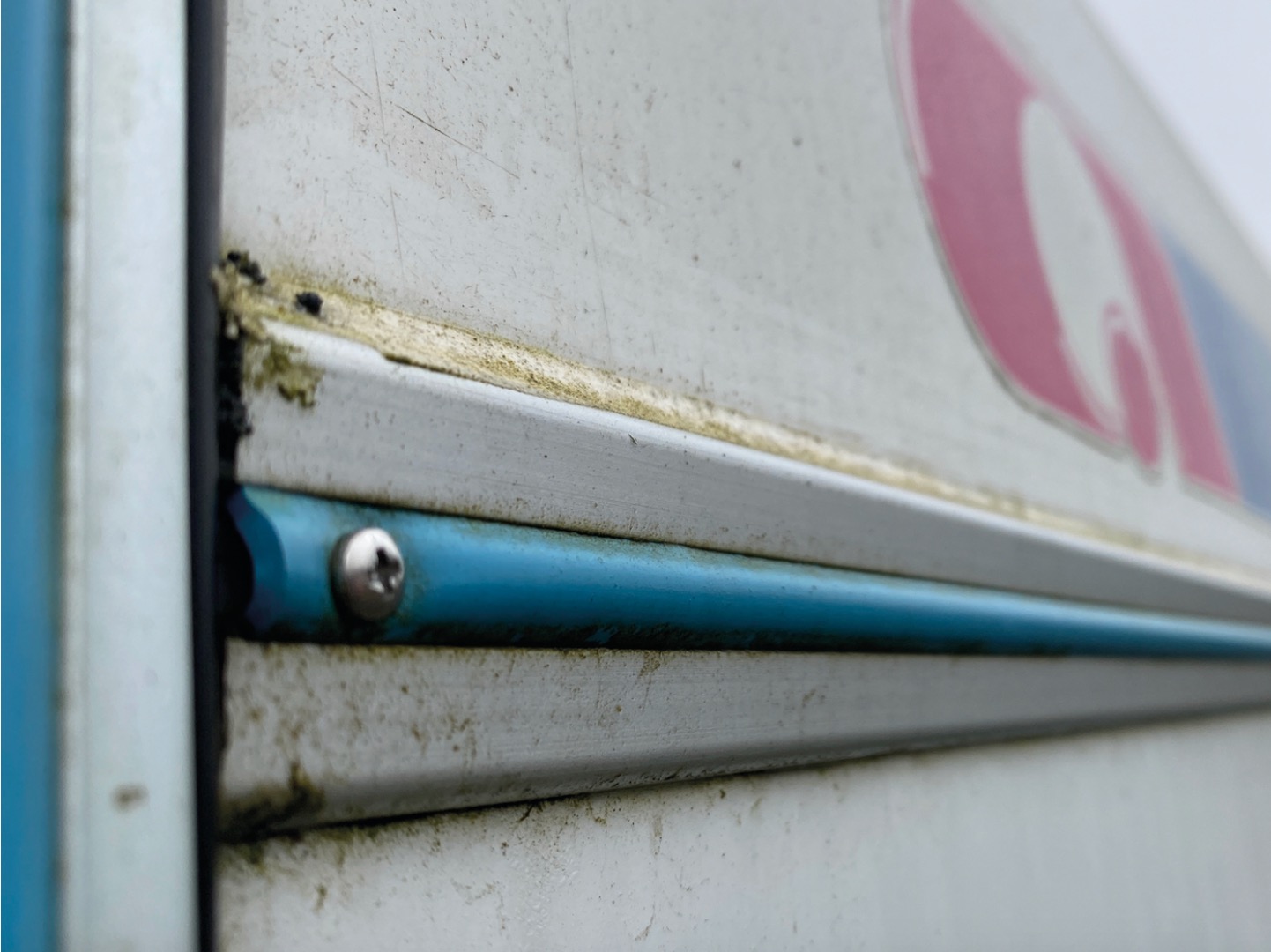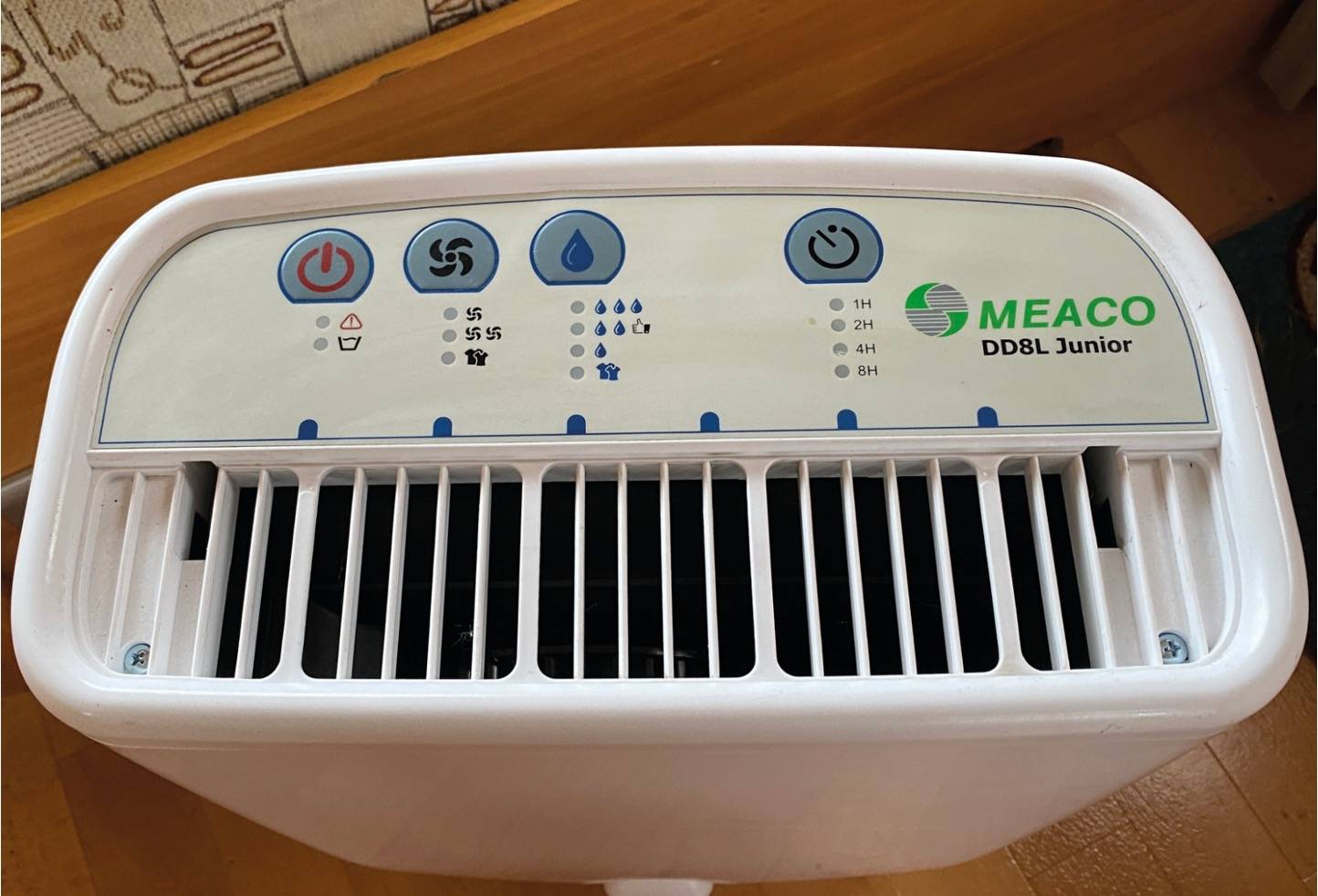Caravan damp: a complete guide
There's little more guaranteed to strike fear into the heart of a caravan owner than the word 'damp'
In the best case, it may be a little condensation after a chilly night; in the worst, it can be the death knell for the caravan, thanks to rotten framework or floors.
But if you keep on top of it, and spot it early, there's no reason damp in your caravan should necessarily mean game over.
Page contents
- What is caravan damp?
- What to do when you see caravan damp
- Measures to take to prevent caravan damp
- Caravan damp repair
- Buying a caravan with damp
- Tips on dealing with caravan damp
- Final thoughts
- About our magazines
Words by Louise Cottrill
What is caravan damp?
Damp is caused when moisture finds its way inside the caravan. How significant damage from damp can be, and how easy it is to deal with, depends on what the caravan is doing at the time.
If you're actually away in the caravan, then the easiest way to prevent damp forming is to ensure that moisture doesn't build up inside – and that means maintaining ventilation.
Moisture can be generated by showering or washing, washing up, cooking or simply a family of four sleeping inside.
How to measure caravan damp

(Photo courtesy of Jim Blackstock)
Damp meters aren't expensive and can save you a fortune if they help you spot – and avoid – a damp caravan. While your pre-season annual service should include a series of damp checks, it won't get into every nook and cranny so it's worth investing in one to keep a good check on your caravan.
The service should check around the door and vents but you can get under the seats, into the far corners, inside all the high – and low – level cupboards and underneath the cooker or inside the wardrobe.
Generally speaking, a damp meter should give you a percentage reading and 0-15% is usually regarded as no cause for concern.
Areas with a reading of 15-20% should be kept an eye on and checked periodically to see if they change, while a reading of 20-24% would indicate moisture is entering and should be investigated more. And 25-30% would indicate definite water presence and repair work required while 31% and above is a bit of a mess and may mean significant structural damage is likely.
If you don't have access to a damp meter, then running your hands over the surfaces will often tell you whether there is surface moisture present or the surface itself is damp.
Apply a little pressure as you go around to make sure that the walls, for example, don't feel soft or spongy and do the same on the floor, making sure it all feels solid.
Look for tell-tale areas of bubbling on the interior finishes, staining in corners of the ceiling or signs of mould or mildew forming, and in very bad cases, you will be able to smell damp long before you see it. In this case, things are likely to be in a state...
First signs of caravan damp

(Photo courtesy of Jim Blackstock)
There is no way to prevent the moisture being generated by any of these situations and, in fact, most people will be familiar with a slight damp feeling on surfaces or under bedding in the morning, especially after a chilly night.
However, the key to prevent this moisture becoming a problem by developing into damp is by opening doors and windows and allowing as much air around the caravan as soon as possible afterwards.
It is fairly obvious, when cooking, for example, that opening a window or the roof vent will allow warm – and moist – air to escape before it collects. Similarly, if you use the shower, then open a window when you're done – this will allow the worst of the steam out and prevent it collecting.
Also try to avoid drying wet clothes inside the caravan. It may not be possible, especially if you have decided not to put an awning up, but, if you can, leave them in the awning or see if the campsite you're staying at has a launderette and use the tumble dryer there.
What to do when you see caravan damp
If you do come across damp, then don't panic, and work through things logically. The first thing to do is work out where and how water is entering and plug the leak.
If the caravan has been stored, for example over winter, then clearly the water has entered from outside, so give the exterior a good inspection to work out where it is coming from. When you discover the source, either repair it yourself or, if you're not confident, get a professional to do it.
Once you've stopped water getting in, you'll need to dry the interior thoroughly. Again, we're back to ventilation and, if necessary, a dehumidifier. We generally avoid heaters, as they can convert damp into airborne moisture that could hinder the process. A dehumidifier will simply remove any moisture from the surrounding environment and that's what you want.
When the moisture has been removed, you may need to tackle mould or mildew. But be very careful – mould spores can be given off when it dries and get in the lungs and can affect the breathing, especially for those with problems like asthma. So wear a mask whenever you're working on mould.
You can use a proprietary mould product but a 50/50 mixture of vinegar and water will work as well, to kill the mould. Spray the area then let it dry. Spray again and use the same product to wipe the area clean. The vinegar will kill the mould and prevent it from returning once you have cleaned it away. In our experience, it doesn't actually leave a smell at all.
Measures to take to prevent caravan damp
Of course, one of the easiest ways to prevent damp is to prevent water ingress at all. While it may be impossible to completely eradicate any route into the caravan for airborne moisture, certainly large-scale ingress should be avoidable; close windows and doors properly and make sure roof vents are closed solidly.
If you have any electrical components on the outside – TV aerials, solar power systems or radio aerials, for example – then ensure that seals are in good condition and consider a refresh with sealant if they are looking a bit tired.
Similarly, look closely at the exterior of the caravan; there may be an issue that allows water into the void between the inner and outer skins that you are unaware of and this is what causes the big problems.
So, check seams, particularly in the roof, for signs of old, cracking or decaying seals and, if necessary, be ready to make them watertight. Also check around heater, cooker or fridge flues to make sure they, too, are sealed against the elements, as it doesn't take much wind to help water find its way in through the smallest crack.
Similarly, heater flues or washroom vents in the roof should also be checked, both inside and out, to make sure that they aren't allowing water in. If they are, then again a careful application of sealant (once completely dry) will help to keep the moisture out.
Preventing damp when in storage

(Photo courtesy of Jim Blackstock)
For short periods of time when the caravan is not being used, again, ventilation is key. During the spring, summer and early autumn months, you can probably leave one or two of the windows on their 'night latch' setting between trips away, which will prevent anyone or anything getting in but let some air flow around the caravan.
As long as it isn't particularly cold, this will help to prevent moisture collecting inside the caravan.
Storing the caravan for longer periods is a different matter. If you're laying the caravan up for winter, then you shouldn't leave windows or vents open, as they will allow damp air in, rather than ventilation to disperse it.
In this case, you are better off closing all the windows and vents and opening as many cupboards and doors as you can to promote what ventilation is available. Remove all bedding, so this doesn't absorb moisture, and, to reassure yourself, you could invest in a moisture trap or a dehumidifier.
A moisture trap will be based on moisture-absorbing crystals that take the moisture from the air and, once the crystals have absorbed their capacity, you will need to replace the trap.
Alternatively, a dehumidifier will remove moisture from the atmosphere constantly and some can be set to maintain a healthy humidity within the caravan, automatically switching on, sampling the humidity and removing moisture if necessary.
To ease the process, look for one with a permanent drain you can run out through one of the sink outlets or a floor vent to prevent having to constantly empty the catch tank.
Caravan damp repair
If the caravan smells musty, then a good airing, along with any seat cushions, for example, will help freshen it up, and a good scrub of the carpets (if fitted) or the flooring will also help.
If you are unlucky enough to find areas of spongy walls or floors or interior finishes that are damaged, then it might be time to call in the professionals, as tackling damaged walls or floors or even framework is a lengthy and complicated process and is not for the faint-hearted.
But as with so many things, prevention is far better than cure, so keep the water out, open the windows when you can and avoid the damp plague.
Buying a caravan with damp
It is easier to avoid buying a caravan with damp and with severe damp you could just be buying yourself a bunch of problems or even writing off the caravan. Make sure you take a damp meter or even get the caravan looked at by a professional before you purchase to ensure whatever is wrong can be easily and cheaply fixed.
Tips on dealing with caravan damp
The biggest tip we have is to prevent damp by keeping the caravan aired and regularly wiping away condensation; after that it is to be aware where the damp can start. Buy a damp meter and ensure you are keeping your eyes open.
Final thoughts
As we said in the first paragraph, caravan damp does strike fear into people but, by following the simple steps outlined above, you will give yourself and your caravan the best chance of staying dry.
Expert Caravan advice to your door!

Caravan magazine has been inspiring caravanners for more than 80 years! We have grown to become a leading authority on caravans, the caravan industry, caravan lifestyle, campsites and caravan travel destinations. We know what our readers want – and that's to make the most of their caravans and their holidays!
Want to know more about Caravan magazine?
About Caravan magazine







Recent Updates
Caravan showers: all you need to know
In this guide, we’ll discuss the different types of showers, how they work, and how to fit an external shower point to your caravan ...
Caravan towing: all you need to know
Towing a caravan may seem daunting initially, but a few simple tips can make the journey enjoyable and ...
All you need to know about towbars & towballs
Flange, detachable, swan neck, retractable – towbar technology choice is bewildering. Don’t worry. We’ll ...
Caravan WiFi: everything you need to know
Caravan holidays are the ultimate way of getting away from it all, although we sometimes need a link to the ...
Caravan insurance: all you need to know
Navigating the world of caravan insurance can feel like a daunting task. Fear not, as this comprehensive ...
Buying a caravan: what you need to know
Let us guide you through some of the complicated things to think about when first looking at buying a ...
Caravan awnings: a buyers' guide
Caravan awnings are a fantastic addition to any caravan as they are one of the simplest, quickest and most ...
Caravan electrics: avoid tripping out
All caravan owners have overloaded their mains supply at some time. Here’s how to master caravan electrics ...
Caravan heating systems: a quick guide to caravanning warmth
When winter is here, you’ll be glad of a decent caravan heating system if you’re out touring. Here’s how the ...
Caravan jockey wheels: the definitive guide
A well-functioning caravan jockey wheel can make all the difference to manoeuvring away from the towcar, ...
Other Articles
Caravan cooking recipes
Caravan cookery inspirational ideas. No need to stress out in the kitchen with these quick and easy time-saving dishes ...
Caravan bike racks: a complete guide
Exploring the beautiful surroundings while on a caravan trip is undeniably one of the greatest joys of the ...
Caravan solar panels: all you need to know
Whether you dream of roaming off-grid or just fancy reducing your carbon footprint, fitting solar panels to ...
The ultimate guide to caravan layouts
Choosing the right layout or floorplan of your caravan is an all-important part of the buying process – find ...
A guide to seasonal caravan pitches
Our in-depth guide to finding and securing seasonal caravan pitches on your favourite campsite ...
Caravan weights and payloads: a quick guide
The terminology of caravan weight – MIRO, MTPLM, noseweight, kerbweight, payload, weight plate upgrade – is ...
The ultimate guide to caravan motor movers
Caravan motor movers: everything you need to know about remote control caravan manoeuvring ...
Caravan cleaning: All you need to know
Whether you’re taking the caravan out for the first time or it’s just in need of a spruce up, our guide will ...
18 essential items for camping with your dog
Camping is for the whole family – including our four-legged members. Here's what you'll need to keep your dog ...
14 welly boots for camping trips
It might be April but that won’t stop the rain in the UK, so a pair of comfortable welly boots is still ...